Alrighty, next we're going to look at the removeable light filter and objective lens block.
Mounted over the objective lens is an adjustable light filter with an iris that works exactly like the aperture on a camera lens:
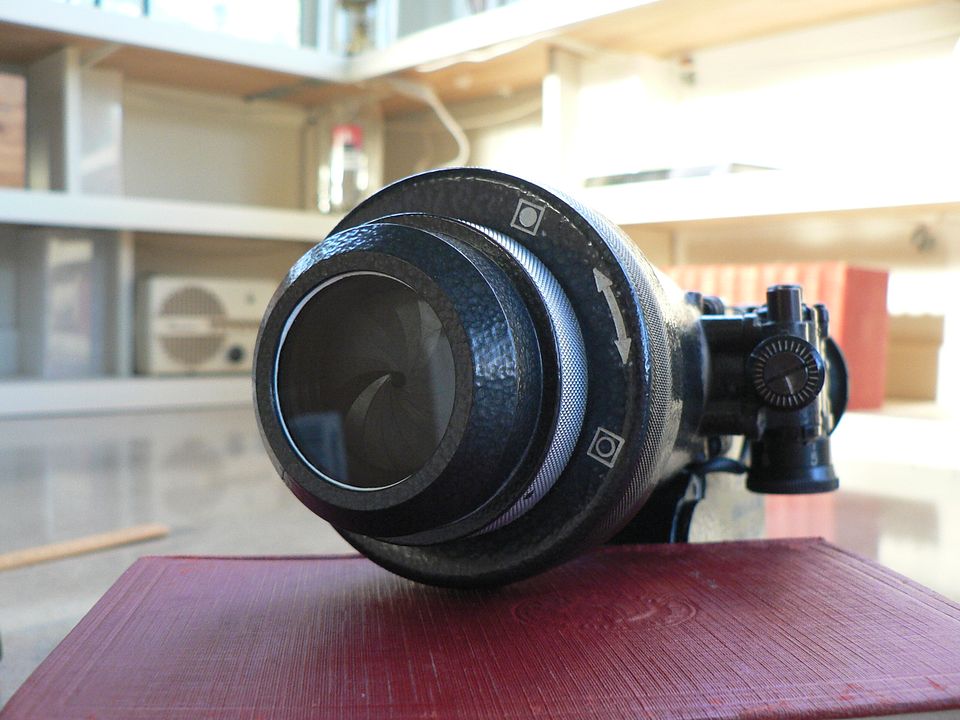
Viewed from the front, turning the adjustment ring clockwise opens the iris, allowing more light into the scope. Obviously, turning the adjustment ring counterclockwise limits the light.
IMPORTANT:
This filter should ALWAYS be mounted and the iris FULLY CLOSED when the unit is put into storage, powered up, used in anything other than nighttime conditions, and left in place after powering down for at least a half hour because the intensifier tube takes a while to discharge after being switched off. If these instructions are not followed, you will, at a minimum, greatly decrease the life of the intensifier tube. At worst, you'll render it inoperable. THINK before you touch ANY of the controls on this scope. Not doing so can really ruin your day.
The filter is held in place on the scope via two bayonet mounts located 180 degrees from each other:
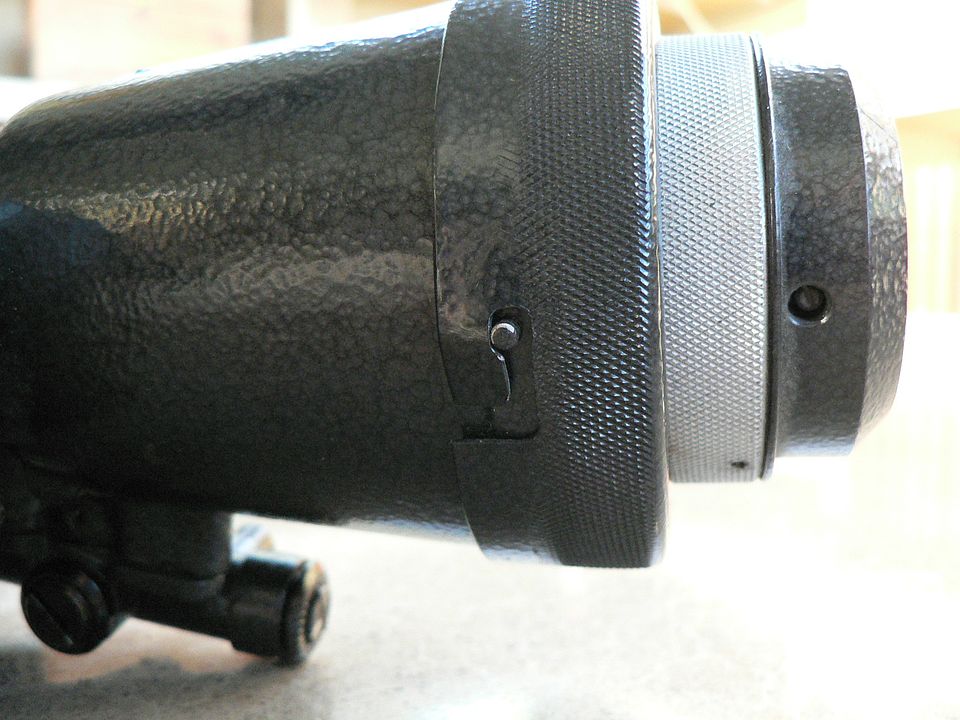
This one is a little distorted and needs a little TLC:
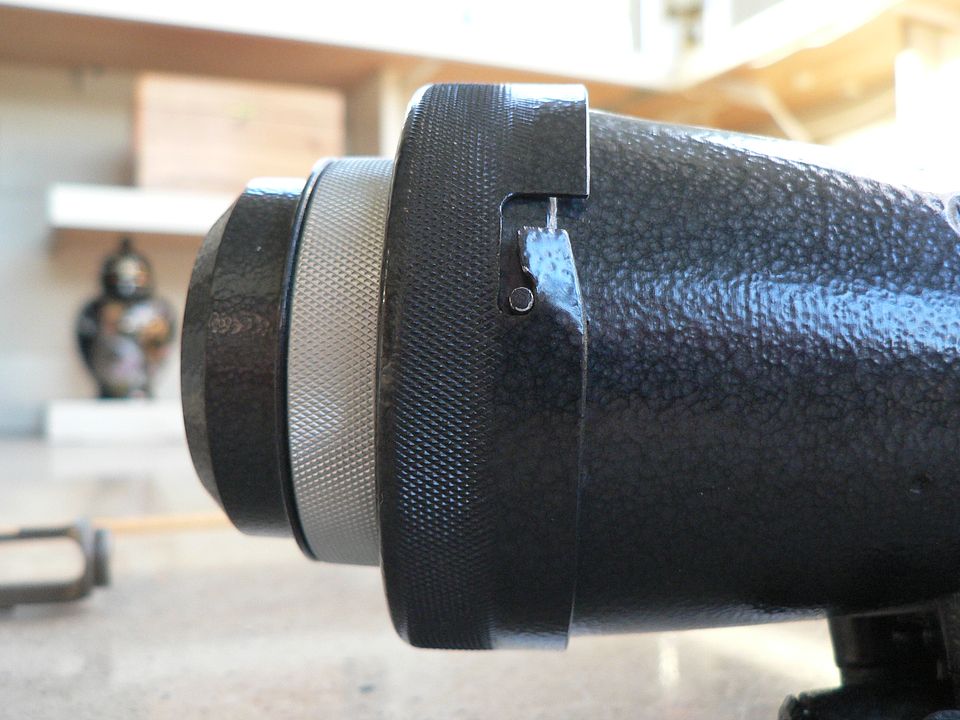
The knurled painted part is used to grip the filter when mounting/dismounting from the scope while the knurled unpainted part is used to adjust the iris.
To dismount the filter when viewed from the front, you grip the painted knurled surface, push to the rear, rotate the filter clockwise until it stops, and pull the filter forward.
To mount the filter when viewed from the front, grip it by the painted knurled surface, line up the pins on the scope body with the slots on the filter body, push to the rear until the pins bottom out in the slots, rotate the filter counterclockwise until it stops, and release.
After mounting the filter, ensure that the iris is fully closed.
Here, we've removed the filter and we're looking at it from the rear with the iris fully open.

What we're looking at is a spring plate that serves to keep tension on the filter when mounted. Without this, the filter would rattle and easily fall off the scope.
Around the outer edge of the spring plate is a rubber gasket bonded to the plate. This helps keep rain out and does double duty acting as a grippy surface as additional insurance against the filter rotating and falling off.
A general side view of the filter removed showing the knurling detail and hammertone finish:

Here, we see the filter removed from the scope and the iris fully closed:
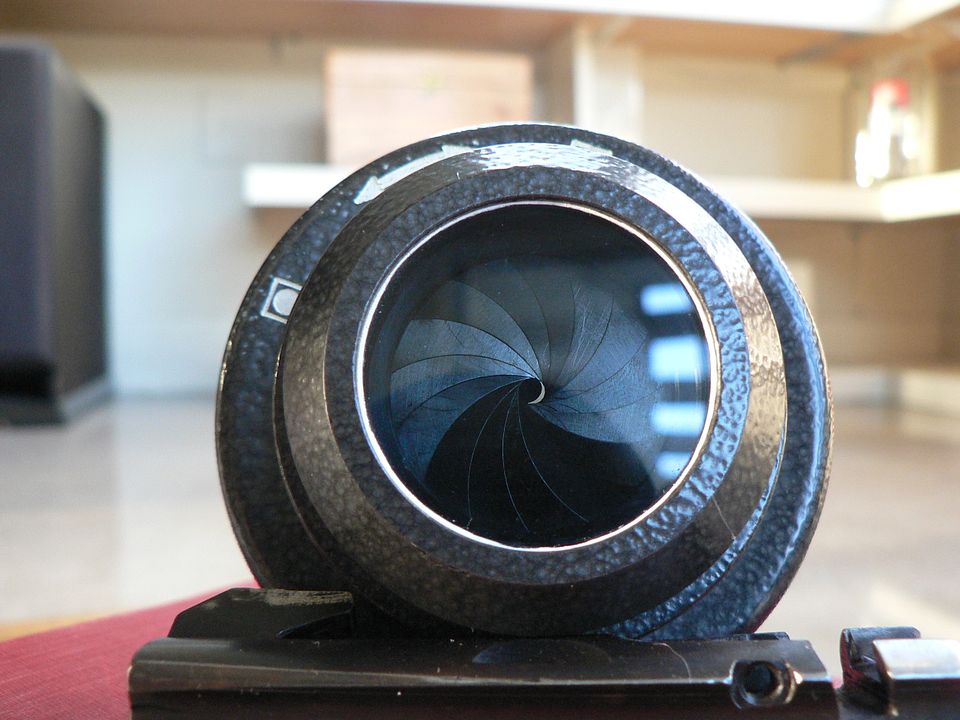
Note the large number of vanes. Also notice that there is just the smallest crescent of light shining through the center of the iris. The reason it's not round will be apparent in the next photograph.
?The iris partially opened:

There are no click stops when opening this up. It's infinitely variable from fully closed to fully opened.
Notice the little tab protruding into the opening at about the 10 o'clock position. This is the reason why you see a crescent of light instead of a round hole when the iris is fully closed. The idea is to absolutely minimize the amount of light entering the scope to protect the intensifier tube if switched on in a bright setting.
Fully opened:

?Notice that the glass is grey like sun glasses. That's the point. We're looking through two neutral density filters.
So, how do you properly use this filter?
No matter when you use this scope, from the noon day sun to the darkest of night, the object is to feed the image intensifier tube only the minimal amount of light necessary for it to do it's job, not one photon more. Too little light, and you won't get a useful image. To much light and the you'll burn out the tube.
So, no matter the time of day or night, you power the unit on with the filter mounted and the iris fully closed. Then, you SLOWLY open the filter until you get a useful image. There are no set in stone parameters here because there are many variables. Some of these variables are, the brightness of the sun, the brightness of the moon, how cloudy the sky is, haze, open field or forest setting, ambient light at night, and probably others that escape me at the moment. Experience is the best teacher here.
If a useful image cannot be obtained with the filter full opened, only then do you remove it and expose the objective lens to the elements. But keep the filter handy as conditions can change rapidly and you might need to reinstall it in a hurry, even at night.
Just remember, every single photon that enters the objective lens degrades the intensifier tube a little bit. That tube has a service life. How long that life is is directly proportional to how much light you expose it to. If I sound like I'm nagging, it's because I am. I cannot overstress how careful you need to be. As you can imagine, replacement parts are impossible to find and one screw up will destroy the tube.
Here is the objective lens with the filter removed:

I briefly touched upon it earlier but I want to elaborate. The nominal voltage supplied by the battery pack is 5V. The internal electronics then bump the voltage up to the 19kv (that's 19,000 volts!) required for the intensifier tube to operate. That amount of charge doesn't just magically dissipate instantaneously when you turn the power off. It takes time for the tube to power down. How much time? I can't tell you exactly but it's a number of minutes. What that means is, even though the power is switched off, the charged tube is still sensitive to light. So, let's say you are using the scope on a sunny day. You close the iris completely and switch it off. About 5 minutes later, someone walks up to you and asks what the hell is this thing is you're using that doesn't even have a lens on the front. You say "sure it does, let me show you" as you remove the filter to expose the objective lens. You just fried your tube brother because it's still holding a charge and light sensitive.
My advice is this. After switching the power off, wait AT LEAST 30 minutes before removing the light filter. Better yet, NEVER remove the filter unless you have a good and legitimate reason to do so. That's probably overkill but better safe than sorry. Moving on.
The objective lens you see in the picture above is just the first of a number of lenses contained in the front lens block. This block is then attached to the main body of the scope using four slotted screws. Two of those screws are visible here, on the right side:
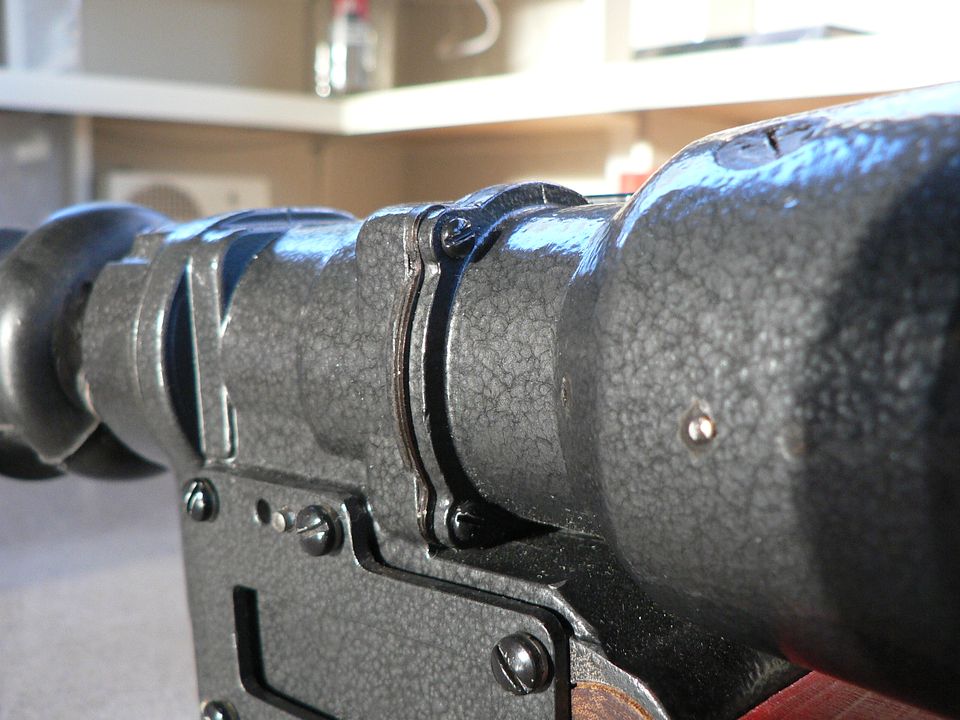
The other two are on the left side. Notice that there is a gasket in place between the front lens block and the main body.
There are numerous other screws found on the body of the front lens block, several of which are shown in this picture:

The large screw appears to have some funk smeared on it. This is a rubbery covering intended, I assume, to act as a waterproofing agent. There are two smaller screws below the larger one but one of the two is barely visible because of the same coating. As I said, there are others as well. Just underneath the large screw is an internal ring holding a number of lenses. My guess is that this screw is used to mount them in place. The various other small screws are most likely used to properly align the internal lenses during manufacture. They probably also serve as stop pins to hold everything fast in place if the unit takes an impact.
Mounted on the left side of the front lens block is the, to quote the manual, "alignment mechanism". It's used to adjust the windage and elevation. It also houses the reticle and reticle light. We'll cover that in the next post.
 Win a FREE Membership!
Win a FREE Membership!

